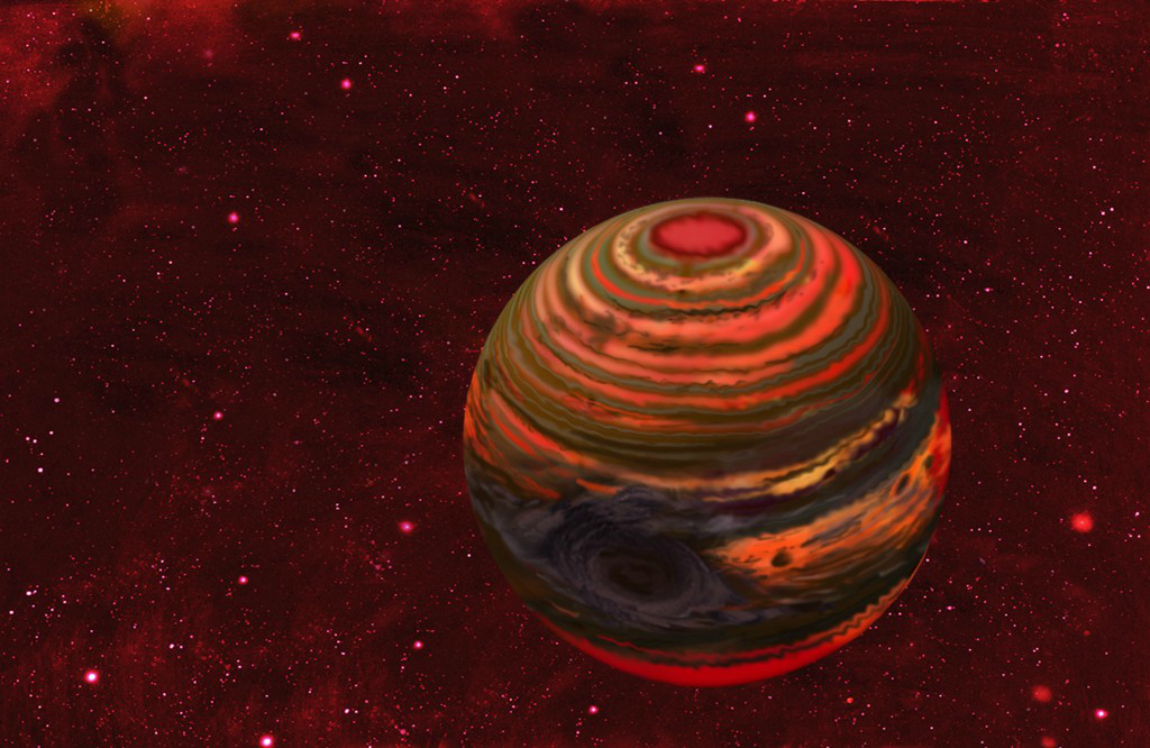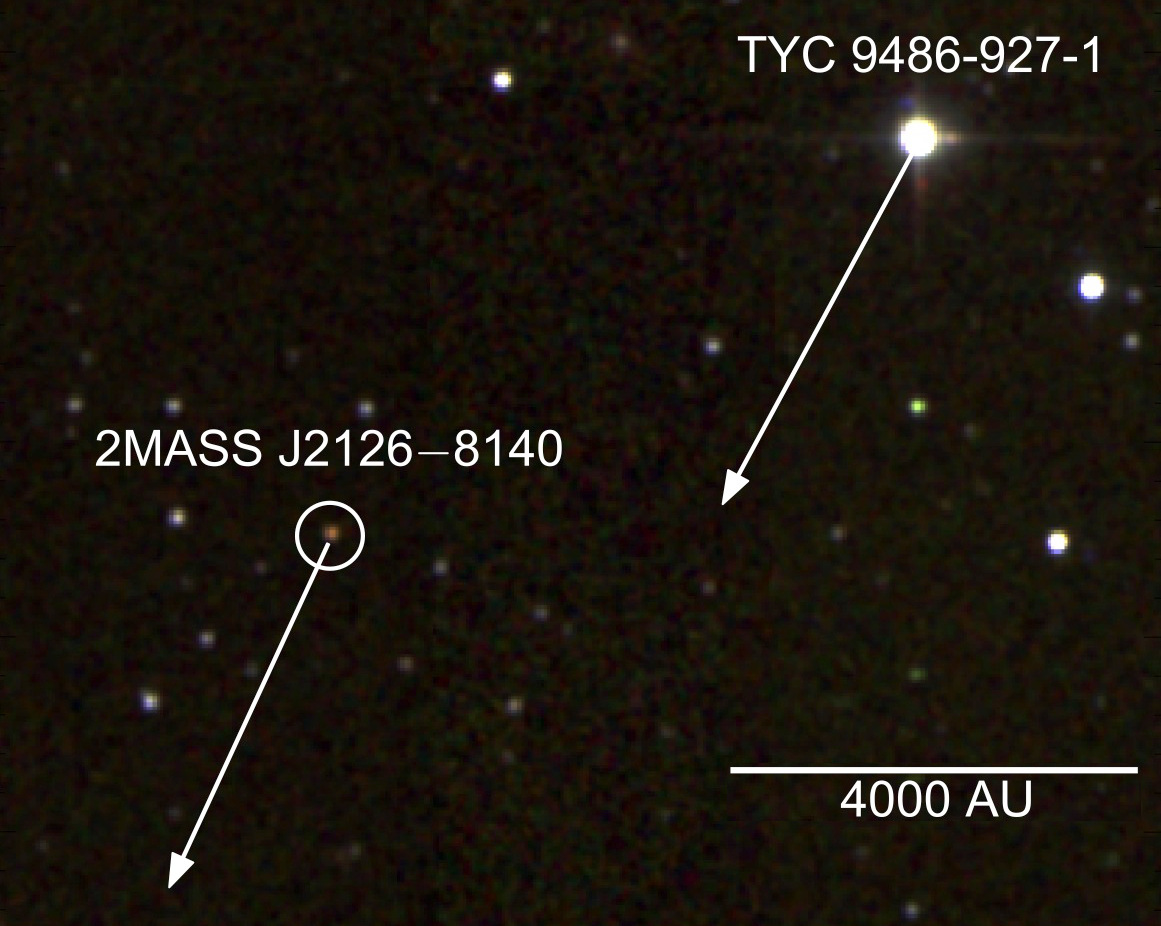
A Distant Companion
Astronomers have found that a planet, formerly believed to be unattached and free-floating, is actually in a very distant orbit around another star. Ultimately, this makes the system the largest solar system ever discovered.
The object, called 2MASS J2126-8140, was previously identified as a member of the Tucana Horologium Association, a small cluster of stars and substellar objects about 140 million years old. Based on its youth and low mass, 2MASS J2126-8140 was classified as one of a very rare group of objects known as “free-floating planets,” which presumably formed about a star in the customary fashion, but were subsequently ejected through gravitational interactions within its parent system, or through the influence of nearby stars in the natal cluster.
But the team of astronomers involved in the new discovery reexamined the data, and learned that 2MASS J2126-8140 seemed to be moving through space in association with a small red dwarf star, TYC 9486-927-1, and that both objects were about 104 light years from the Earth.
It turned out that star and planet were simply so distant from one another that astronomers had failed to associate the two. And no wonder. 2MASS J2126-8140 orbits at a spectacular 6900 Astronomical Units from its primary, or 6900 times the distance of the Earth from the Sun.
That’s over 1 trillion kilometers (621 billion miles), by far the largest orbital radius of any planet so far discovered. Indeed, Its orbit is ultimately 140 times wider than Pluto’s.

At that distance, the red dwarf TYC 9486-927-1 would seem to be but another star in the night sky, and hardly even the brightest; and 2MASS J2126-8140 would complete a single revolution in about a million years.
In fact, the star and its planet are so loosely bound that it’s hard to imagine the two remaining together for much longer. The slightest tug from a passing star would be more than enough to dislodge the planet, and it’s impossible that the system formed in a tightly-bound stellar cluster, as our own is believed to have done.
“We can speculate the pair formed 10 million to 45 million years ago from a filament of gas that pushed them together in the same direction,” observed Dr. Simon Murphy of the Australian National University, one of the astronomers involved in the study.
Once the age of the system was known, it was possible to estimate the mass of 2MASS J2126-8140 as between 11.6 and 15 times that of Jupiter, which places the object firmly astride the 13 Jupiter-mass so-called “deuterium-burning” dividing line that separates planets and brown dwarfs.

Strange World
With such a remote orbit, in the cold, distant reaches of its system, 2MASS J2126-8140 seems unlikely to host any sort of life as we know it; however, if it sits on the further end of the deuterium-burning line, it may generate enough heat to warm any moons it may possess (which could conceivably be as large as the terrestrial planets of our own solar system), and this fact—coupled with the system’s extreme youth—may be enough to foster some sort of biological evolution, unfamiliar to our experience but no less viable.
But the window is fast closing. Within a few million years, even a deuterium-burning brown dwarf will be unable to stave off the encroaching cold of deep space. Beyond that, only the prospect of billions of years of darkness remains for this strange, lonely planet.